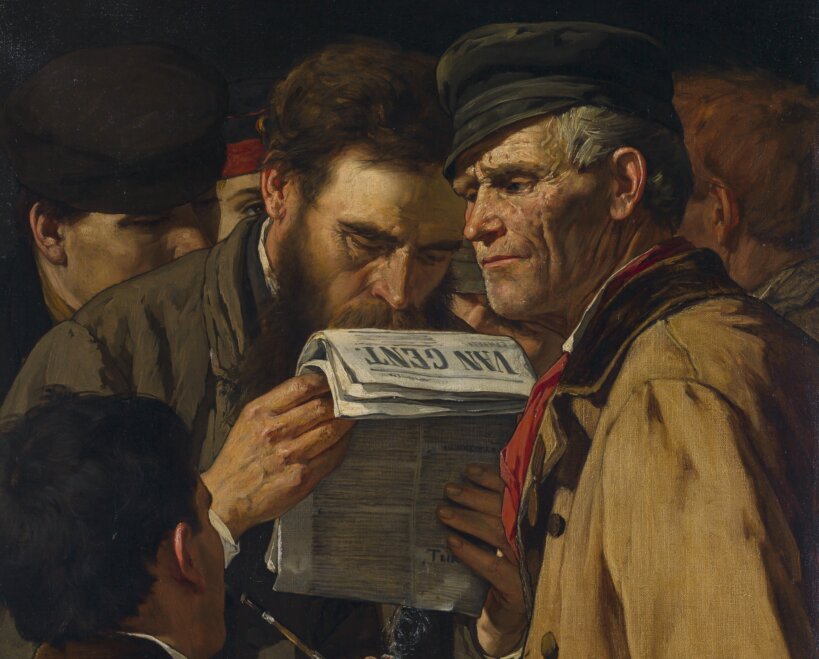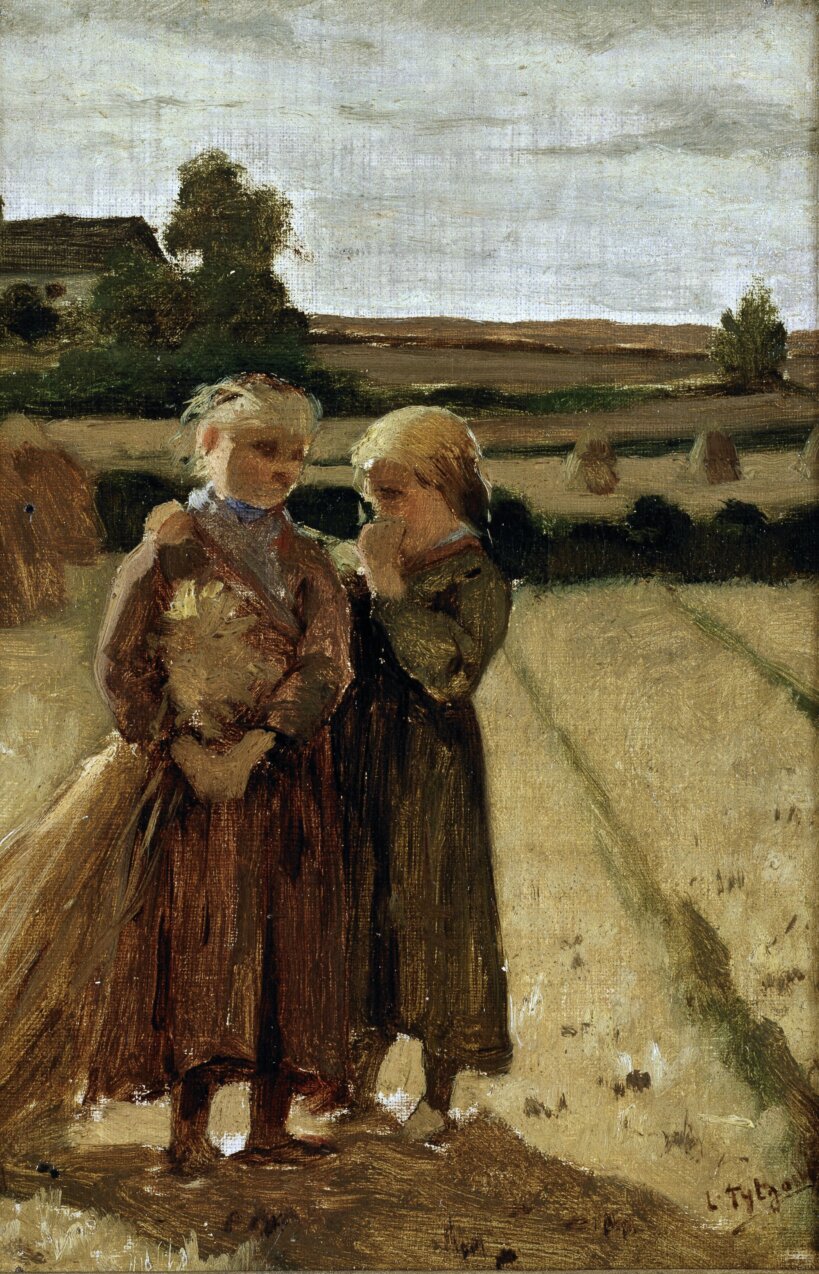We start with an intriguing painting by the Ghent painter and illustrator Louis Tytgadt (b. Lovendegem, 1841; d. Ghent, 1918). In ‘Reading the Gazette van Gent’, six rustic figures are gathered in an undefined space; a bearded man in the middle reads a popular Ghent newspaper. Standing around him are the older man on the right, leaning on a walking stick and wearing a brown coat, a working man’s cap and a striking red neckerchief, and the man smoking a pipe in the left foreground, who serves as a repoussoir. Both look at the central figure, and with their gaze averted from the paper itself it appears they are listening to him read aloud from it.
Was Tytgadt alluding to a social problem here? Statistics from 1875 indicate that illiteracy was still a widespread problem, with more than a quarter of children not attending school and one in five conscripts entirely unable to read or write (source). This wasn’t the only time that Tytgadt addressed an urgent social issue, albeit discretely. In a work in the MSK collection, for instance, a harvest scene shows two small girls in the middle of a field holding ears of corn, a clear reference to the very common occurrence of child labour both in the countryside and in cities.


